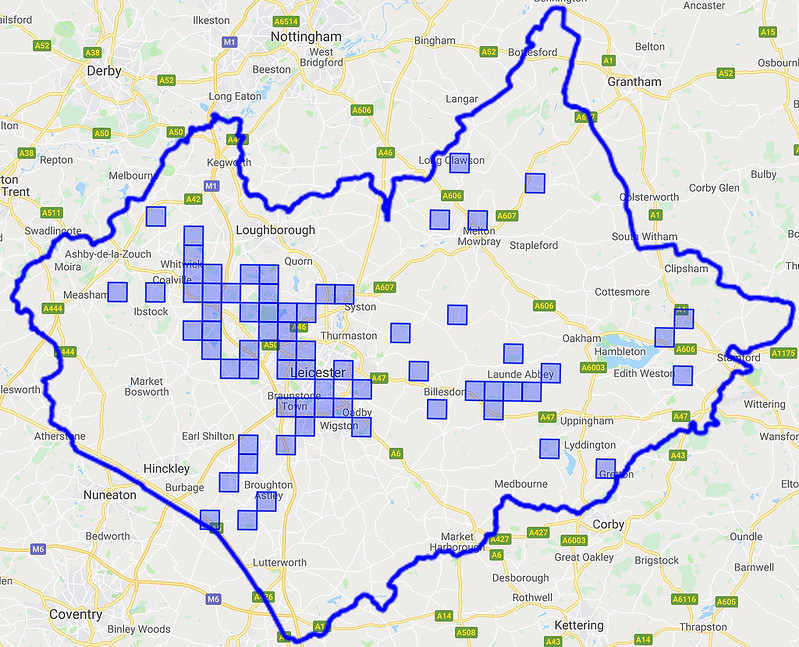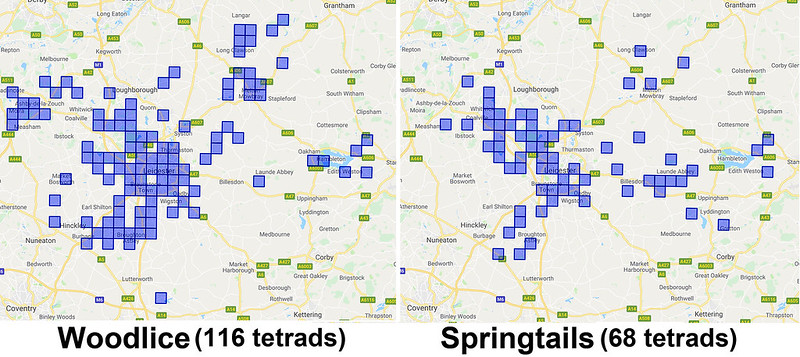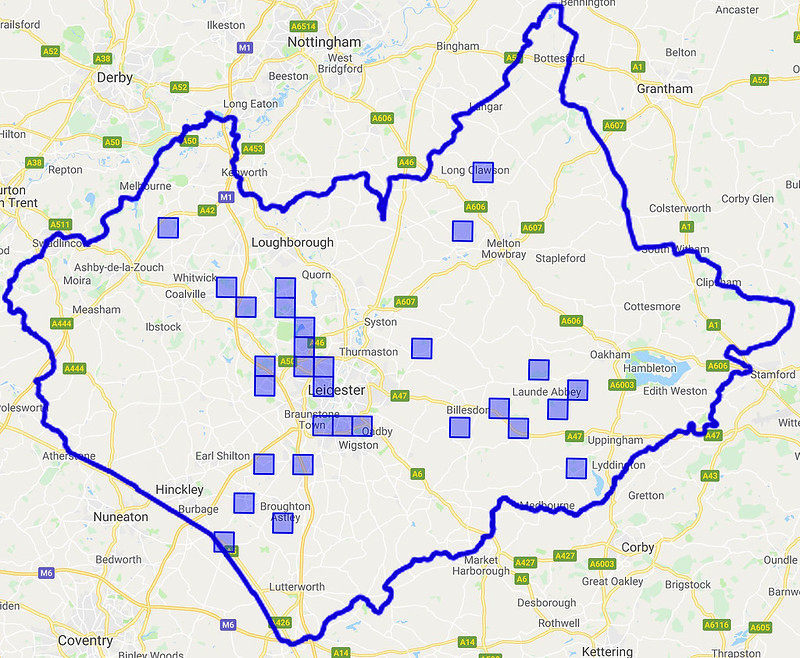VC55 All Collembola records:

While the pattern of recording generally follows that for other taxons in VC55, what this current map reveals is that there are plenty of gaps to be filled. So far, so simple - drive almost anywhere and record springtails! The next step is a little more complicated - comparing VC55 Collembola records with other taxons. I have decided to adopt two benchmarks for this. The first is a comparison of springtail and woodlice records. I chose to use woodlice because while they are not too far away from springtails, they are more familiar to most people and the common species generate more records than springtails. Thus woodlice represent the next step up the recording hierarchy:

I'm moderately encouraged by this. As expected there are rather more woodlice records in VC55 but this clearly represents an achievable target. The second stage of benchmarking involes correcting for recording effort. Peter Shaw makes a strong case for adopting Orchesella cincta as a benchmark for recording effort/bias:
"... the genus Orchesella is taxonomically uncomplicated and species may be determined by eye using colour patterns. Distribution data for Orchesella species in the UK should therefore be reliable. The commonest and most distinctive is Orchesella cincta (Linnaeus, 1758), with 230 UK records of this species dating back to 1834 (Templeton 1835). The UK distribution map shows a strong bias towards the London area, with very few records in Cornwall, Wales or northern Scotland. Since the rst author of the present review has collected this species with approximately equal ease in all parts of England, Wales and the Scottish lowlands, this distributional bias in fact surely refects recorder bias, though its apparent absence from high mountains may be accurate, as it is said to be replaced by Orchesella alticola. In summary, the main infuence visible on the biogeography of this common, large and distinctive species in the UK is recorder bias. For less common or distinctive species this bias can only be worse."
Shaw, P., et al (2013) Updating taxonomic biogeography in the light of new methods–examples from Collembola. Soil Organisms, 85(3), 161-170.
VC55 Orchesella cincta records:

To date there are 29 tetrads with Orchesella cincta records, indicating the distance left to travel. It's not clear to me what represents an "acceptable" level of coverage, but these indicators at least allow measurement of progress.
No comments:
Post a Comment
Comments welcome, I will respond as soon as I can.
Note: only a member of this blog may post a comment.